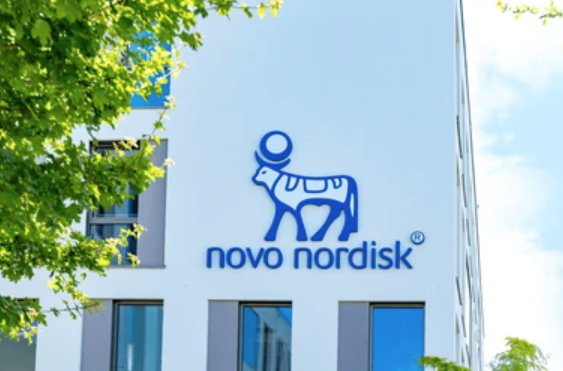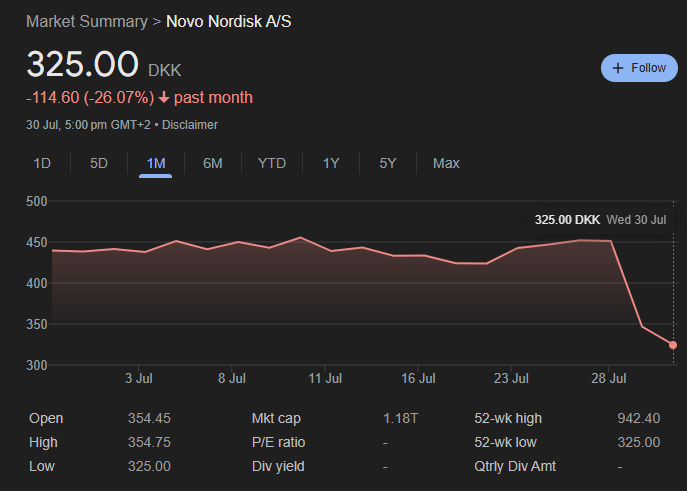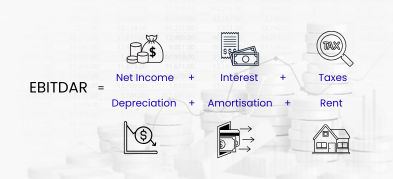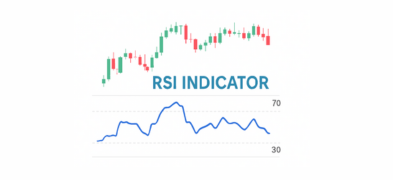Important Information
This website is managed by Ultima Markets’ international entities, and it’s important to emphasise that they are not subject to regulation by the FCA in the UK. Therefore, you must understand that you will not have the FCA’s protection when investing through this website – for example:
- You will not be guaranteed Negative Balance Protection
- You will not be protected by FCA’s leverage restrictions
- You will not have the right to settle disputes via the Financial Ombudsman Service (FOS)
- You will not be protected by Financial Services Compensation Scheme (FSCS)
- Any monies deposited will not be afforded the protection required under the FCA Client Assets Sourcebook. The level of protection for your funds will be determined by the regulations of the relevant local regulator.
Note: Ultima Markets is currently developing a dedicated website for UK clients and expects to onboard UK clients under FCA regulations in 2026.
If you would like to proceed and visit this website, you acknowledge and confirm the following:
- 1.The website is owned by Ultima Markets’ international entities and not by Ultima Markets UK Ltd, which is regulated by the FCA.
- 2.Ultima Markets Limited, or any of the Ultima Markets international entities, are neither based in the UK nor licensed by the FCA.
- 3.You are accessing the website at your own initiative and have not been solicited by Ultima Markets Limited in any way.
- 4.Investing through this website does not grant you the protections provided by the FCA.
- 5.Should you choose to invest through this website or with any of the international Ultima Markets entities, you will be subject to the rules and regulations of the relevant international regulatory authorities, not the FCA.
Ultima Markets wants to make it clear that we are duly licensed and authorised to offer the services and financial derivative products listed on our website. Individuals accessing this website and registering a trading account do so entirely of their own volition and without prior solicitation.
By confirming your decision to proceed with entering the website, you hereby affirm that this decision was solely initiated by you, and no solicitation has been made by any Ultima Markets entity.
I confirm my intention to proceed and enter this websiteWhy Is Novo Nordisk Stock Falling?
Novo Nordisk stock (NYSE: NVO) plunged over 23% on July 29, 2025, after the pharmaceutical giant slashed its full-year forecast due to slowing U.S. sales of its blockbuster drugs Wegovy and Ozempic. This unexpected guidance cut wiped out more than $70 billion in market value, marking one of the worst single-day performances in the company’s history.
The fall was driven by weaker-than-expected U.S. demand, growing competition from Eli Lilly, and the impact of compounded copycat drugs in the obesity treatment market.

What Does Novo Nordisk Do?
Novo Nordisk is a Danish multinational pharmaceutical company that focuses on treatments for diabetes, obesity, and rare endocrine disorders. It is best known for its GLP-1 receptor agonist drugs:
- Ozempic (semaglutide) for type 2 diabetes
- Wegovy, its obesity-focused version of semaglutide
The company operates globally and is one of the largest by market capitalization in the healthcare sector. It competes directly with Eli Lilly, particularly in the high-growth obesity drug segment.
Why Is Novo Nordisk Stock Falling?
Slashed Full-Year Guidance
On July 29, Novo Nordisk revised its 2025 outlook, lowering:
- Sales growth forecast to 8–14% (down from 13–21%)
- Operating profit growth to 10–16% (from 16–24%)
This downgrade came as a surprise to investors, who had expected continued strong growth fueled by high demand for GLP-1 drugs. The company’s explanation focused on sluggish U.S. uptake due to increased availability of compounded versions of semaglutide, which undercut branded drugs like Wegovy.
“This profit warning is rooted in U.S. market pressure, not manufacturing issues,” noted Novo’s management during the earnings call.
Stock Plunge and Market Reaction
Following the announcement:
- Novo Nordisk stock in USD dropped over 23%, from $130 to nearly $100
- The company lost more than $70 billion in market capitalization
- Trading volume surged, indicating broad institutional sell-offs
Bank of America and other analysts downgraded the stock, citing rising competition and uncertainty about U.S. GLP-1 adoption trends.
Competition from Eli Lilly and Copycat Drugs
Eli Lilly’s Zepbound (tirzepatide) continues to expand market share, putting downward pressure on Novo’s pricing power. In addition, U.S. patients and providers are increasingly turning to compounded semaglutide products, which are often cheaper and more accessible, despite regulatory concerns.
FDA enforcement against compounding clinics has not yet curbed this market’s impact, leading to declining Wegovy prescription growth in the U.S.
Is Novo Nordisk Going to Recover?
Despite the sell-off, many analysts believe the long-term fundamentals remain intact:
- Barclays, Jefferies, and J.P. Morgan maintained “neutral” or “overweight” ratings but lowered their price targets
- Morgan Stanley sees a rebound potential once compounded product risks are mitigated
However, short-term sentiment remains cautious. Novo Nordisk must re-establish pricing control and demonstrate sales recovery in the U.S. to regain investor confidence.
Novo Nordisk Stock Performance

In July 2025, Novo Nordisk stock experienced a steep decline, falling over 26% from approximately 440 DKK to 325 DKK, marking its worst monthly performance in recent years. The sharp drop occurred primarily over the final two trading days, July 29 and 30 after the company issued a surprise profit warning and lowered its full-year 2025 sales and earnings guidance.
The sell-off dragged the stock to its 52-week low of 325 DKK, erasing months of gains and triggering widespread concern among institutional investors. This downward move signals a major shift in market sentiment, driven by weaker U.S. demand for its flagship obesity drug Wegovy and intensified competition from compounded drug alternatives.
Are Novo Nordisk Shares Worth Buying?
For long-term investors, the recent correction may represent a buying opportunity, depending on risk appetite. While the company faces near-term U.S. headwinds, its global pipeline remains strong.
Pros:
- Leader in GLP-1 innovation
- Global distribution and brand trust
- High profit margins (30%+)
Risks:
- Weak U.S. prescription growth
- Prolonged competition from compounded drugs
- Market share erosion by Eli Lilly
Analysts suggest waiting for further clarity on U.S. regulatory actions against copycats and signs of prescription recovery.
Novo Nordisk Outlook: 2025–2026 What’s Ahead?
The outlook for Novo Nordisk (2025–2026) hinges on how the company navigates a trifecta of challenges: U.S. market erosion, regulatory action against compounded drugs, and intensifying competition from Eli Lilly’s Zepbound. However, it also benefits from long-term global demand for GLP‑1 therapies and potential recovery momentum.
U.S. Market Headwinds: Compounded Drugs
One of the biggest drags on Novo Nordisk’s outlook is the proliferation of compounded semaglutide drugs in the U.S. These unbranded, often cheaper alternatives have undercut Wegovy’s growth, particularly in states where regulation is weak or enforcement is slow.
Despite FDA warnings, many U.S. pharmacies and clinics continue to offer compounded versions, creating price pressure and slowing prescription growth. If the U.S. regulatory environment doesn’t tighten soon, this risk could persist well into 2026, threatening the company’s ability to regain its dominant market share.
Competition from Eli Lilly (Zepbound)
Eli Lilly’s Zepbound (tirzepatide) has been gaining momentum as a serious challenger to both Ozempic and Wegovy. Not only is it effective in weight loss, but it also shows comparable or superior results in type 2 diabetes control.
In Q2 2025, Zepbound received expanded approvals in Europe and Japan, intensifying global competition. Analysts expect Eli Lilly to continue stealing market share in 2025 and into 2026 unless Novo innovates or expands faster in under-penetrated markets.
Global Demand Still Rising
On the upside, global obesity treatment demand is accelerating, particularly in Asia-Pacific, Latin America, and parts of Europe, where GLP‑1 drug access is still expanding. Novo Nordisk has already launched new distribution initiatives in India and Southeast Asia, positioning itself to tap into new revenue pools in 2026.
Also, despite the U.S. slowdown, overall prescriptions for GLP‑1 therapies globally are projected to grow 20%–25% annually through 2026, according to IQVIA and Bloomberg forecasts.
Novo also announced a CEO transition, with Maziar Mike Doustdar set to take over from Lars Fruergaard Jørgensen on August 7, 2025. Doustdar’s priority will be to restore U.S. growth and regain investor trust.
Conclusion
Why is Novo Nordisk stock falling? The decline stems from a sharp cut in full-year guidance, slowing U.S. sales due to compounded semaglutide competitors, and intensified pressure from Eli Lilly. While the sell-off was severe, the company’s global fundamentals remain robust. Recovery will depend on how swiftly Novo can address the U.S. challenge and reinforce its leadership in obesity care.
At Ultima Markets, we continue to monitor pharmaceutical sector dynamics closely, with a particular focus on GLP‑1 therapies and how regulatory developments may influence stock trajectories. Traders should stay alert for updates around U.S. compounded drug regulation and upcoming earnings guidance, as these will likely define Novo Nordisk’s next move.
Disclaimer: This content is provided for informational purposes only and does not constitute, and should not be construed as, financial, investment, or other professional advice. No statement or opinion contained here in should be considered a recommendation by Ultima Markets or the author regarding any specific investment product, strategy, or transaction. Readers are advised not to rely solely on this material when making investment decisions and should seek independent advice where appropriate.












